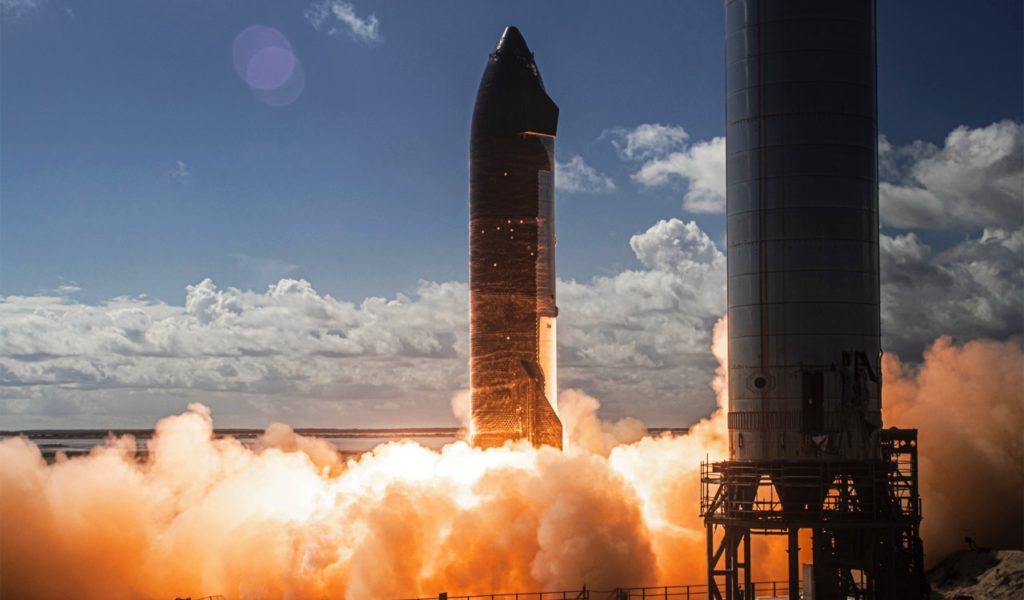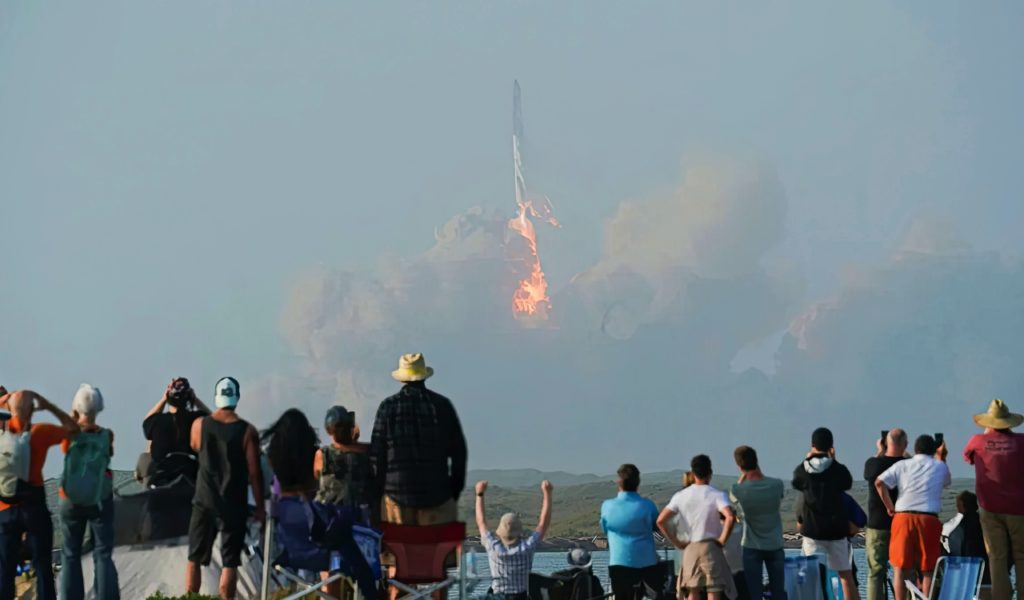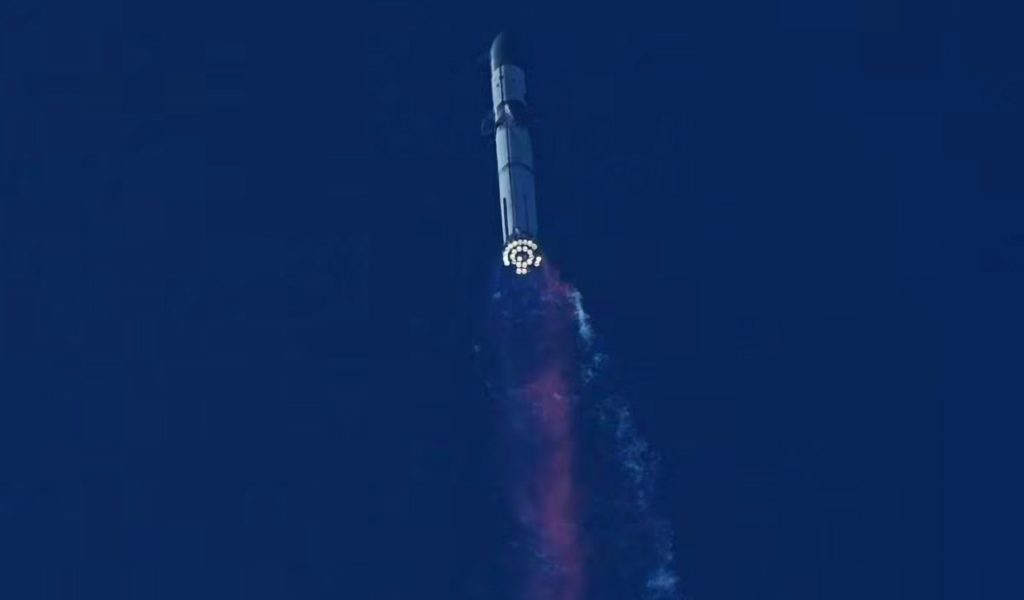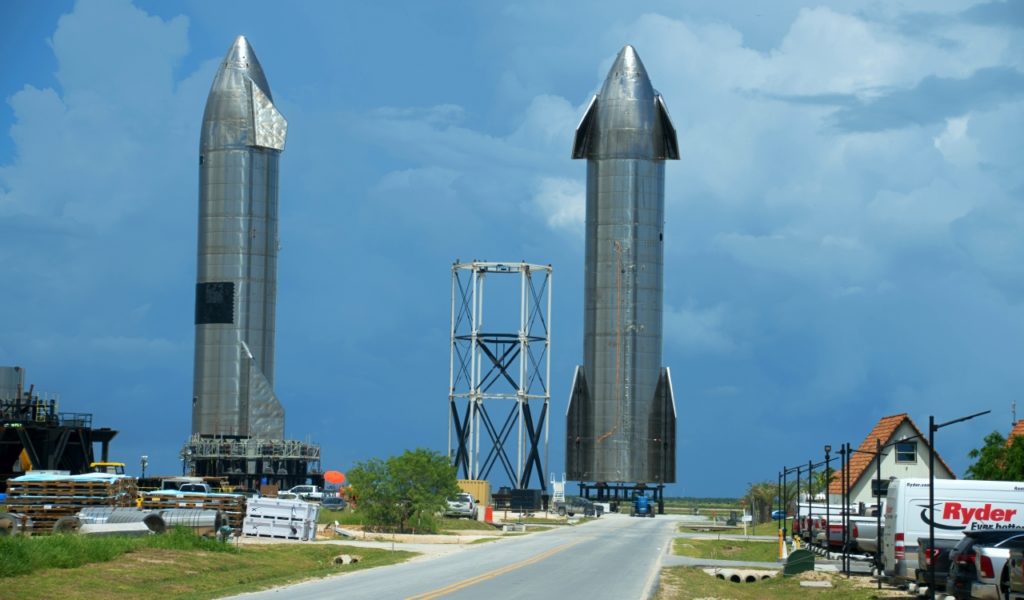The new SpaceX Starship was planned to go on its first test flight recently but Owner, Elon Musk, shut down the launch for fear something seemed off. It turns out he, or really his engineers weren’t wrong, and it seemed like fixes were in play. However, more fixes were likely needed.
During the first flight today, the SpaceX Starship exploded just a few minutes into its launch. Taking off around 9:33 am on Thursday morning April 20th in South Texas, everything seemed okay at first. Yet once the stage separation was supposed to occur, the explosion happened.
Of course, no one was on board and SpaceX was not planning to send any satellites into orbit on the test flight either. Therefore, it is a good thing no one was hurt and that SpaceX did not lose any of its machinery, besides the test starship that is.
The question is, what actually happened to cause the explosion in midair? Did it have something to do with the separation itself or was there another cause to be concerned about?
The SpaceX Starship Failure

SpaceX actually tweeted during the test flight: “As if the flight test was not exciting enough, Starship experienced a rapid unscheduled disassembly before stage separation.”
“Unscheduled” is code for unexpected and not good, for those unaware. Any engineer will tell you that if something happens that you do not expect, then something is going wrong.
The massive Super Heavy Rocket Booster, which actually has 33 engines, lifted off and one could hear a huge boom across the coastal landscape as it lifted off. It was soaring over the Gulf of Mexico.
Then approximately 2 1/2 minutes after takeoff, the Super Heavy Rocket Booster was set to expend most of its fuel and separate from the Starship spacecraft. That would allow for the booster to fall into the Gulf.
Then the Starship was supposed to use its own engines to fly on its own for roughly six minutes and even propel itself to nearly orbital speeds.
When the flight reached its highest point of 24.2 miles above the ground, that was when the explosion took place. Which would have been around four minutes after the official liftoff.
Why did things not go as planned?
“The vehicle experienced multiple engines out during the flight test, lost altitude, and began to tumble. The flight termination system was commanded on both the booster and the ship. Teams will continue to review data and work toward our next flight test.”
What The FAA Had To Say About It

A lot of that might seem kind of confusing, so the Federal Aviation Administration (FAA) elaborated more on what happened. This gave us a bit more in terms of detail. They claimed:
“An anomaly occurred during the ascent and prior to stage separation resulting in a loss of the vehicle. No injuries or public property damage have been reported. The FAA will oversee the mishap investigation of the Starship / Super Heavy test mission.
A return to flight of the Starship / Super Heavy vehicle is based on the FAA determining that any system, process, or procedure related to the mishap does not affect public safety. This is standard practice for all mishap investigations.”
With This Failure Also Came Success

One would assume that if your rocket explodes unexpectedly during its first test flight, there might be a few things wrong. Therefore, how could one call any of this a success? Well, you have to understand this in terms of what they were trying to do at SpaceX.
They actually met several of their objectives with this launch.
First, they cleared the major milestone of actually clearing the launchpad. In the lead-up to liftoff, Elon Musk himself wanted to temper expectations because he was not sure if the Starship would get off the ground. In fact, he claimed before the launch:
“Success is not what should be expected. … That would be insane.”
Afterward, Musk said of the test:
“With a test like this, success comes from what we learn, and today’s test will help us improve Starship’s reliability as SpaceX seeks to make life multi-planetary.”
He went on to congratulate team members on “an exciting test launch” in a post-launch tweet. He also claimed they learned a lot for the next test launch, which is set to take place in just a few months.
Of course, they cannot just do a launch. To launch another SpaceX Starship, they need another launch license from the FAA. Of course, Musk does not feel this will be much of a problem.
The Future Of The SpaceX Starship

SpaceX owner Elon Musk has probably hyped up the Starship for just under a decade now. Seriously, he has been making elaborate claims about it for a long time. Musk has repeatedly mentioned its potential to carry both cargo and humans to Mars.
Due to SpaceX proving itself over the years, NASA as well as other space programs have worked closely with them for a while now. NASA is also planning to use the Starship to put astronauts on the moon again.
Yet to Musk, the Starship has been his ultimate dream. In fact, he claimed the entire reason for starting SpaceX was to develop a spacecraft like the Starship in order to establish a human settlement on Mars.
Of course, it has to be able to reach orbit before it can get to Mars. SpaceX is known for embracing issues like this. As they have had their fair share of explosive tests & regulatory hurdles over the years. Fiery mishaps have happened during many test launches outside of SpaceX too, of course.
Yet Musk and his team feel that accidents are the quickest and most efficient way to gather data. This is a pretty big difference from how NASA operates. They prefer the slow, methodical approach over the dramatic explosion issues.
However, Musk is blowing his own money and NASA would be blowing taxpayer dollars, so that is likely a reason for their approach and why they differ so much.
Resources:
https://www.npr.org/2022/03/17/1087167893/elon-musk-mars-2029
https://www.washingtonpost.com/technology/2023/04/14/starship-launch-faa-license/